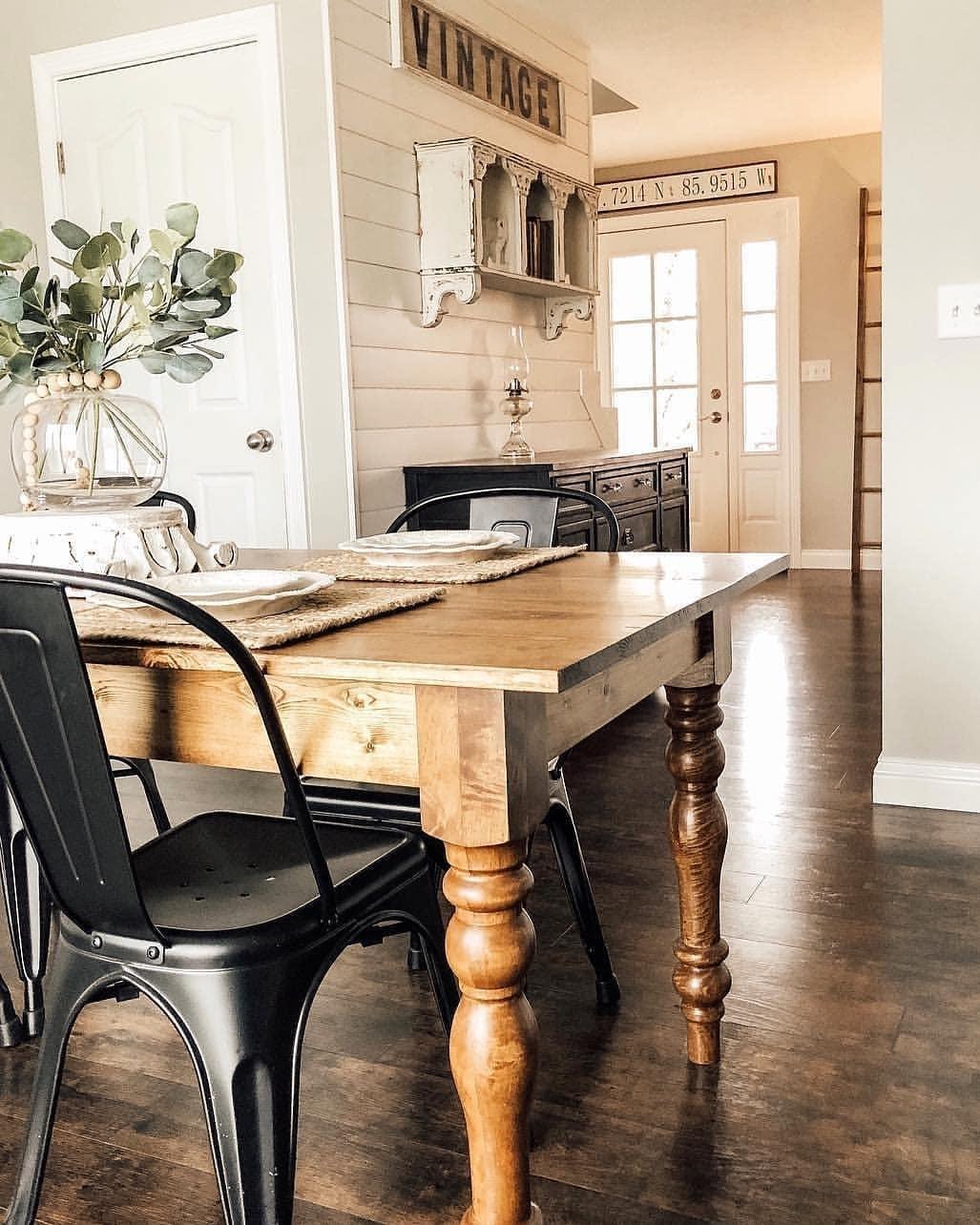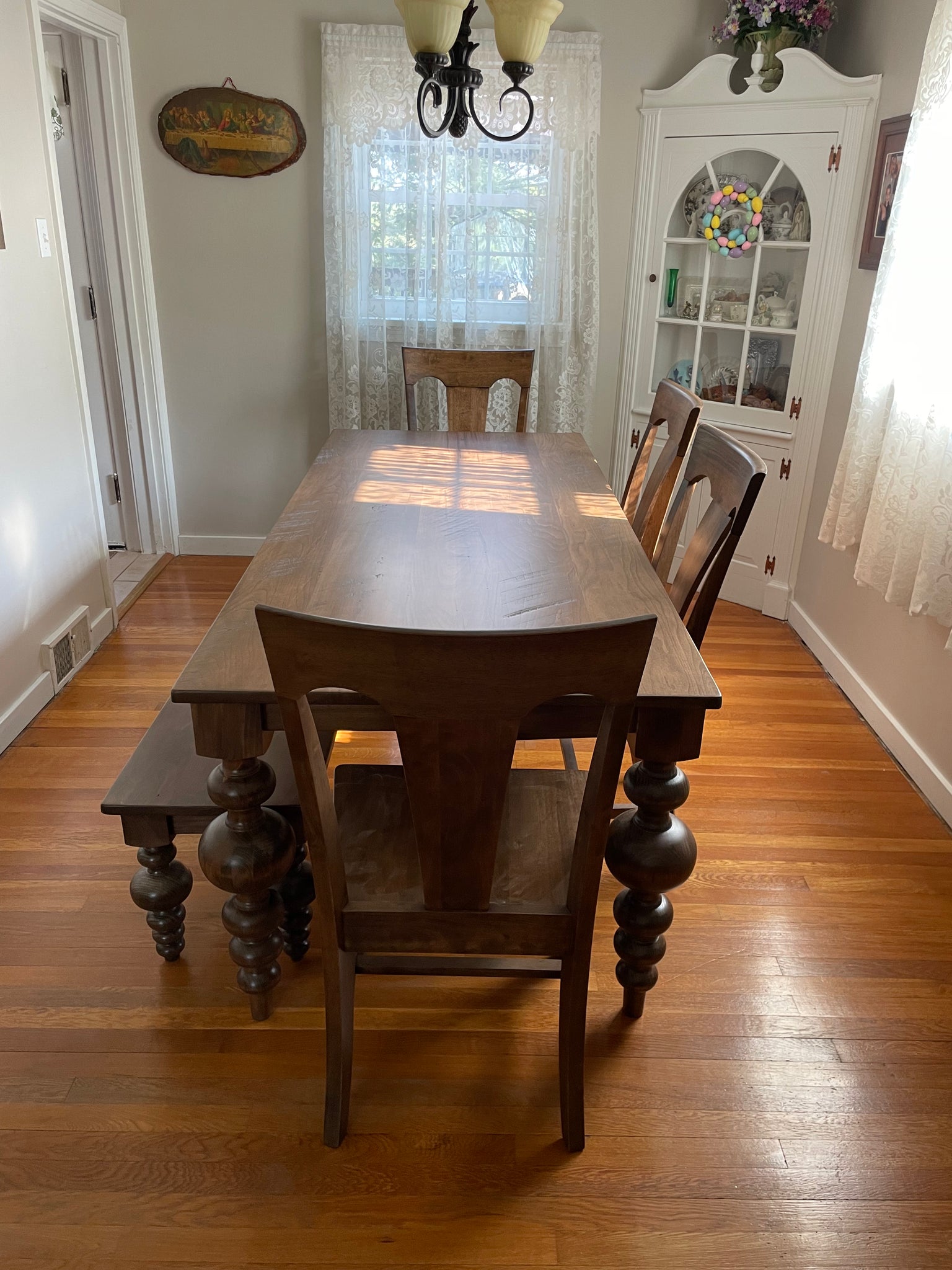Dining Room Table Legs That Incorporate Functionality and Modern Style
Dining Room Table Legs That Incorporate Functionality and Modern Style
Blog Article
Picking the Perfect Table: What Styles Work Best for Your Home?
Choosing the ideal table for your home can be a nuanced process that stabilizes aesthetics and capability. Whether your area leans towards traditional sophistication, contemporary minimalism, rustic appeal, or industrial stylish, the selection of designs available can cater to diverse tastes. Each layout provides one-of-a-kind benefits and challenges that can either improve or disrupt your eating area's consistency. Recognizing just how various products, forms, and dimensions interact with your existing decoration is crucial. To navigate these selections effectively and discover a table that genuinely matches your home, think about the adhering to elements carefully.
Analyzing Your Room
Evaluating the dimensions and design of your eating area is an important primary step in picking the perfect dining table. Begin by determining the length and width of the space, accounting for entrances, windows, and other building functions that might affect table placement. This guarantees that your table not just fits yet additionally enables comfy motion around it.
Think about the number of people you commonly entertain. A table must suit your house's day-to-day needs while using adequate flexibility for periodic visitors. As a regulation of thumb, assign a minimum of 24 inches of table width per individual to guarantee a comfy eating experience.
It's additionally important to keep ideal clearance around the table. Preferably, there must go to least 36 inches in between the table edge and wall surfaces or various other furnishings, making it possible for very easy accessibility and movement. For spaces where chairs with arms or extra storage units like buffets are entailed, raising this clearance to 48 inches is recommended.
Lighting and ambience play significant roles too. Guarantee that your table straightens with existing illumination fixtures or strategy for ample lights solutions. This extensive spatial evaluation assurances that your dining table not just fits physically however also balances with your space's overall capability and aesthetic.
Popular Table Styles

Conventional table usually include ornate details, bent legs, and rich wood coatings, stimulating a feeling of ageless elegance. They are excellent for homes with traditional decoration or those aiming to include a touch of class to their eating location.
Modern dining tables focus on simplicity and tidy lines, often incorporating materials like glass and steel. These tables are perfect for modern rooms, providing a sleek and minimalist appearance that enhances minimal layout ideologies.
Rustic eating tables, on the various other hand, stress natural products and a handcrafted appearance - dining room table legs. They commonly feature redeemed timber and a troubled finish, creating a cozy and welcoming environment. These tables function well in farmhouse-style homes or those looking for a comfy, organic feel
Industrial dining tables integrate basic materials such as metal and timber, typically showcasing an utilitarian visual. This style is fit for loft spaces or city rooms, adding a touch of sturdy charm and resilience to the eating experience.
Each style provides distinctive benefits, making it vital to select one that aligns with your home's total style and your individual choices.
Product Choices
When choosing a dining table, the option of material plays an important role in figuring out both the table's looks and capability. Timber, steel, glass, and composite materials each deal one-of-a-kind advantages and challenges, making it critical to line up the product with your home's decor and lifestyle needs.
Wood is an ageless and functional alternative, readily available in selections such as oak, walnut, and mahogany. Known for its durability and warmth, timber complements both conventional and contemporary interiors. However, it calls for normal maintenance to stop scrapes and warping.
Metal tables, typically crafted from stainless steel, light weight aluminum, or functioned iron, are applauded for their contemporary appeal and effectiveness. They are specifically suited for commercial or minimalist setups yet can be susceptible to damages and might really feel cool to the touch.
Glass table bring an air of style and openness, perfect for smaller spaces as they produce an illusion of even more room. While simple to tidy, glass can be vulnerable to spots and needs mindful taking care of to stay clear of chips and cracks.
Composite materials, such as MDF and plywood, deal economical and customizable solutions, though they may do not have the long life of natural materials. Picking the best product ensures your dining table is both a practical asset and a visual pleasure.
Shape and Size Factors To Consider
After determining the proper product for your table, the following consideration is choosing the right sizes and shape to match your space. The form of the table significantly influences the room's visual and performance. Rectangular tables, the most usual shape, are ideal for bigger spaces and can fit a greater number of visitors. They likewise permit an extra official dining experience. Alternatively, round tables foster a feeling of affection and are outstanding for smaller eating areas, motivating conversation by eliminating corners and making everyone really feel just as consisted of.
Dimension is equally critical and must be determined by both the area's dimensions and the variety of individuals you intend to seat on a regular basis. Generally of thumb, assign at the very least 24 inches of table size each to guarantee comfortable dining. In addition, consider the table's clearance room: there need to go to the very least 36 inches in between the table edge and the wall surfaces or other furniture. This guarantees that diners can walk around quickly without really feeling confined. Extending tables provide adaptability if you often organize larger events, providing additional seating when needed without inhabiting extra room daily. Choosing the ideal shape and dimension makes certain both practicality and visual consistency in your eating area.
Matching Your Style
Selecting a dining table Visit This Link that integrates with your existing decor is essential in producing a natural and inviting room. A streamlined, minimalist table with tidy lines is excellent for a modern home, while a vintage, luxuriant table fits an extra typical setting.
If your decoration features cozy tones and all-natural materials, think about a wooden table to improve the organic feeling. Conversely, a glass or steel table might be much more ideal in a room controlled by cool shades and commercial elements.
Appearance plays a vital role. A rough-hewn, reclaimed wood table can add character to a rustic space, while a sleek marble surface area can elevate an extravagant eating location. Think about the scale and proportion of the table in relationship to the area dimension and existing furnishings. A well-matched dining table not just improves visual allure but likewise enhances the general dining experience.

Conclusion
Choosing the excellent dining table demands careful consideration of space, design, visit this web-site materials, form, and check size (dining room table legs). Typical tables enhance timeless insides with rich wood coatings, while modern tables fit contemporary settings via glass and metal. Rustic layouts introduce warmth via natural products, and commercial styles boost urban settings with raw aspects. Balancing the table with existing decoration ensures both performance and aesthetic appeal, adding to a cohesive and aesthetically pleasing eating location.
Report this page